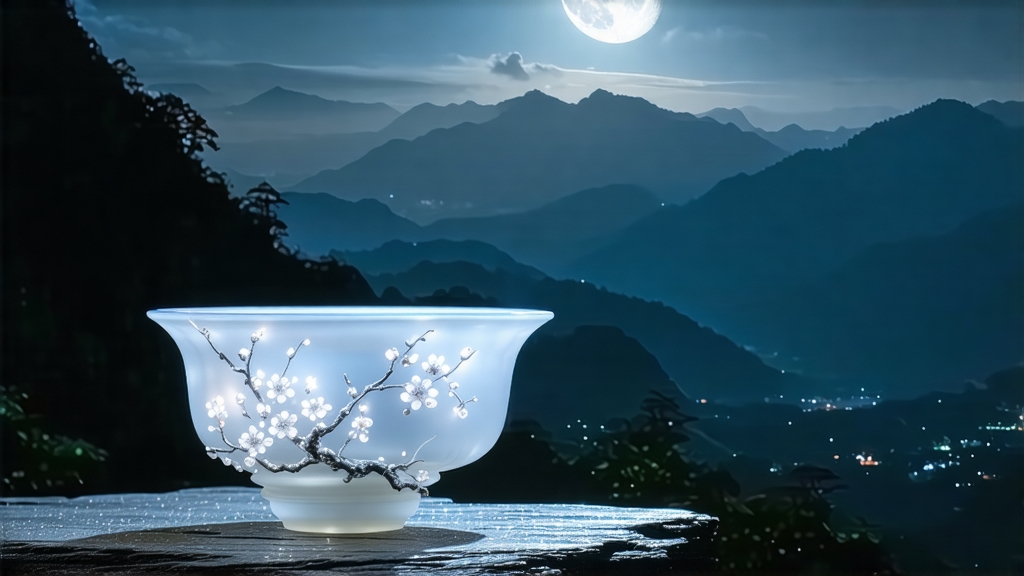
Tucked high on the forested ridges of Yunnan’s Simao and Lincang prefectures, a tea that the locals call “Yue Guang Bai”—literally “Moonlight White”—is harvested in hushed excitement when the summer monsoon pauses and the plateau sky turns ink-black. To international drinkers white tea usually means Fujian’s Silver Needle or White Peony, yet this southwestern cousin carries an entirely different genealogy, aroma and legend. Its leaves are moon-withered, its liquor glows like pale champagne, and its taste moves from honeyed melon to alpine orchid in a single breath. Understanding Yue Guang Bai is therefore a doorway into the lesser-known frontier of Chinese white tea, where ethnic minority traditions, terroir-driven leaf chemistry and nocturnal craftsmanship converge.
Historical whispers
Commercial white tea was codified in Fujian during the late Qing dynasty, but Yunnan’s moonlight variant is a late-twentieth-century reinvention. Oral history credits a small team of tea engineers who, while searching for alternatives to sun-withering during the 1983 rainy season, spread fresh leaves on bamboo trays under the open night sky. The cool air slowed enzymatic browning, preserving a silvery pubescence while allowing a gentle inner fermentation. Villagers noticed the leaves’ edges curled like a new moon and the infusion tasted mysteriously brighter; the poetic name “Moonlight White” stuck. Export began only after 2003 when compressed 100 g cakes—modeled after pu-erh—won gold at the Kunming International Tea Expo, catapulting the tea onto Western specialty menus.
Botanical pedigree
Yue Guang Bai is made almost exclusively from Yunnan large-leaf varietal (Camellia sinensis var. assamica), the same arboreal stock that gives punch to pu-erh. Yet the plucking standard is unusually strict: one fat bud plus the immediate half-open leaf, picked when the bud is still “fish-hook” curved and densely downy. The assamica cell structure contains more polyphenols and long-chain amino acids than the Fujian small-leaf, translating into a thicker mouth-coating and a lingering cool sweetness that Chinese tasters describe as “sheng jin”—literally “generating saliva.”
Craft under starlight
Processing follows four minimalist steps, each timed by nature rather than machines.
- Night harvest: Picking starts after 8 p.m. when mountain humidity drops and leaf temperature equilibrates. Head-lamps are discouraged; moonlight is thought to keep chlorophyll calm.
- Moon-withering: Leaves are laid 2 cm thick on screened racks inside open-walled barns. For 48–72 hours they breathe alpine air scented with wild orchids, losing about 70 % moisture while oxidizing only at the edges.
- Shade drying: At dawn the half-withered leaf is moved to a shaded corridor where diffused light finishes the job over another day. Direct sun is avoided to prevent “greening” and grassy notes.
- Low-temp bake: A final 40 °C bake for twenty minutes drops water activity below 7 %, stabilizing the silver-white appearance and locking in a melon-cucumber bouquet. No rolling, no kill-green—hence white tea’s signature “untouched” character.
Compressed forms
Unlike Fujian whites that remain loose, 60 % of Yue Guang Bai is stone-pressed into 100 g or 200 g cakes. The gentle pressure micro-ruptures cells, encouraging slow post-fermentation akin to raw pu-erh. A five-year-old cake brews amber with notes of dried apricot and alpine honey, making it one of the few white teas that improve with deliberate aging.
Terroir fingerprints
Altitude (1,400–1,800 m), red lateritic soil rich in iron, and a 15 °C diurnal swing create a unique metabolic rhythm. Thriving in scattered forest gardens among camphor and walnut, the tea trees absorb terpenes from neighboring plants, explaining the unmistakable cool eucalyptus finish in the cup.
How to brew: Western versus gongfu
Western mug (300 ml): 3 g leaf, 85 °C water, 4 min first infusion, two subsequent 5 min steeps. Expect a pale gold liquor with honeydew front and mineral tail.
Gongfu style (120 ml gaiwan): 5 g leaf, 85 °C, flash rinse, then 10